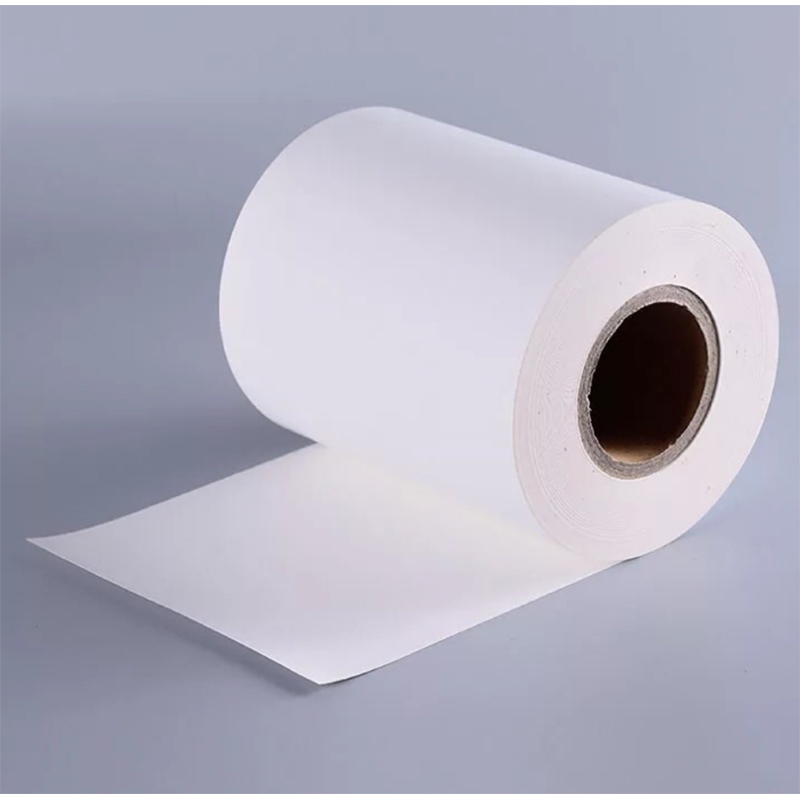العلم اللزج وراء ملصقات نفث الحبر ذاتية اللصق
Dec 17,2025الثورة الرقمية في وضع العلامات: فهم الملصقات ذاتية اللصق للطباعة النافثة للحبر بالأشعة فوق البنفسجية
Dec 08,2025الثورة الرقمية على قدم وساق: فهم ملصقات أفلام PP الاصطناعية
Dec 03,2025الورق الحراري للملصقات: العمود الفقري لتحديد الهوية الحديثة
Nov 24,2025تألق فيلم PET بالألمنيوم لوضع العلامات
Nov 19,2025The Environmental Impact of Woodfree Paper
Woodfree paper is often seen as a more eco-friendly alternative compared to traditional wood-based papers. Here's why:
Reduction in Deforestation: The production of woodfree paper generally involves using non-wood cellulose fibers, such as cotton, hemp, or agricultural by-products, rather than harvesting wood. This reduces the demand for timber and helps conserve forests, which play a crucial role in mitigating climate change by absorbing carbon dioxide.
Recyclability: Woodfree paper is 100% recyclable, and it can be reused multiple times without compromising its quality. Unlike some other paper types, which degrade after repeated recycling, woodfree paper maintains its integrity, making it a valuable material for recycling programs.
Sustainable Sourcing: Many manufacturers of woodfree paper use sustainably sourced raw materials, such as cotton and other plant fibers grown in eco-friendly conditions. In addition, some companies opt for certified sustainable forest management programs, ensuring that their materials come from responsibly managed sources.
Lower Carbon Footprint: The production of woodfree paper tends to generate fewer greenhouse gas emissions compared to traditional paper production. This is due to the use of alternative fibers that are less resource-intensive and more easily biodegradable. Furthermore, the manufacturing processes for woodfree paper often involve energy-efficient technologies, further reducing its carbon footprint.
Sustainable Manufacturing Processes
The process of producing woodfree paper is inherently more sustainable than that of traditional wood-based paper. Some key aspects of the sustainable production of woodfree paper include:
Chemical Pulping: Instead of using wood, woodfree paper relies on chemical pulping processes, which break down non-wood cellulose fibers, such as cotton, using chemicals like sodium hydroxide and sodium sulfite. This process reduces the need for harmful chemicals and minimizes the environmental impact.

Chlorine-Free Bleaching: Many woodfree papers are produced using chlorine-free bleaching processes, which reduces the harmful effects of chlorine-based chemicals on the environment. Chlorine-free bleaching is less polluting and helps maintain the natural integrity of the fibers.
Water Conservation: The production of woodfree paper often involves more efficient water management systems, reducing water waste and consumption during the manufacturing process. This makes it a more water-conscious option compared to some traditional paper-making techniques.
Energy-Efficient Technologies: Manufacturers of woodfree paper frequently invest in energy-efficient equipment, reducing the overall energy consumption required to produce the paper. This helps lower the overall environmental impact of the production process.
The Role of Woodfree Paper in the Circular Economy
Woodfree paper plays a crucial role in the circular economy, which focuses on minimizing waste and maximizing the reuse and recycling of materials. Because woodfree paper is fully recyclable, it can be reused multiple times without losing its quality. This makes it an essential component in the recycling industry, as it helps close the loop and reduce the need for virgin materials.
Moreover, the widespread use of woodfree paper in packaging, printing, and other industries encourages the use of recyclable and sustainable materials, promoting a more sustainable approach to consumption and production.
لدينا فريق بحث وتطوير محترف وقدرات تصنيع قوية لضمان جودة المنتج والتسليم أثناء القيام بعمل جيد في تكرار المنتج والابتكار.
المبنى 2. رقم 111 طريق شينتشنغ، شارع شيتانغتشياو، هايان، جياشينغ، مقاطعة تشجيانغ، الصين:العنوان
+86-150 0573 0249: الهاتف
+ 86-0573-8685 2732:التلفون
+ 86-0573-8685 2732:الفاكس
[email protected]:البريد الإلكتروني

 English
English русский
русский Español
Español عربى
عربى